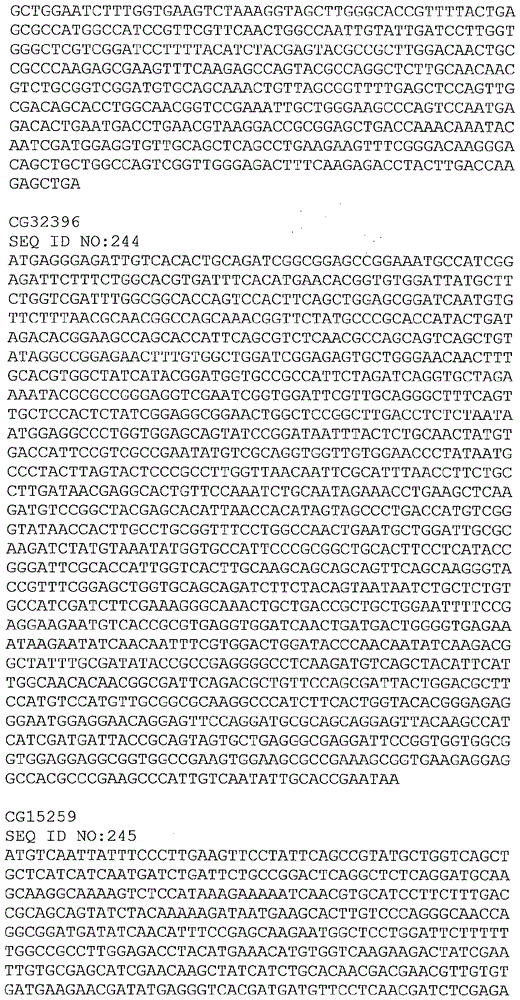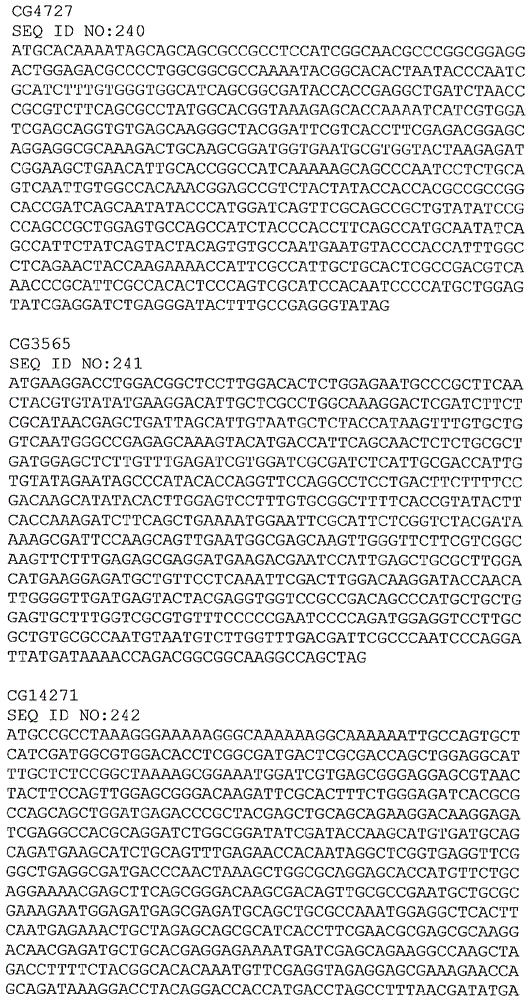Biological control of insects
一种昆虫、组合物的技术,应用在昆虫的生物防治领域,能够解决没有广泛使用、禁止或推迟等问题
- Summary
- Abstract
- Description
- Claims
- Application Information
AI Technical Summary
Problems solved by technology
Method used
Image
Examples
Embodiment 1
[0081] In order to produce sterile insects without the use of radiation, non-specific chemical sterilant compounds, or transgenic insects, methods were developed to sterilize insects using oral double-stranded RNA (dsRNA) delivered to their larval stages. In the present invention, several genes were identified that, when targeted by RNAi, can sterilize male insects. Whether ingested dsRNA can effectively silence genes in all tissues other than the gut, particularly the gonads of insects, was unknown prior to this study. In addition to silencing genes associated with male (and female) fertility, it was also determined that sex ratios can be altered by feeding larvae with dsRNA targeting the female variant of an intersex gene involved in sex differentiation. Combining testis-specific and female-specific dsx dsRNAs, it is possible to generate mosquito populations that are almost entirely male and either completely sterile or have severely reduced fecundity. It was also found tha...
PUM
 Login to View More
Login to View More Abstract
Description
Claims
Application Information
 Login to View More
Login to View More - R&D
- Intellectual Property
- Life Sciences
- Materials
- Tech Scout
- Unparalleled Data Quality
- Higher Quality Content
- 60% Fewer Hallucinations
Browse by: Latest US Patents, China's latest patents, Technical Efficacy Thesaurus, Application Domain, Technology Topic, Popular Technical Reports.
© 2025 PatSnap. All rights reserved.Legal|Privacy policy|Modern Slavery Act Transparency Statement|Sitemap|About US| Contact US: help@patsnap.com



